reviewed by Truman Perkins
High yield agricultural production is a result of hardworking. Successful gardeners do a proper calculation and pre-determined timing before planting. Knowing the soil pH is their primary objective as far as optimal growing conditions are necessary. After doing adequate soil pH testing and asserting soil status, they take the essential pH balancing option. So, you have to know how to test soil pH.
If the soil is more acidic, they add liming materials to lift the pH level, such as carbonates, hydroxides, silicates, etc. On the other hand, there are various elements to increase hydrogen ion concentration for too alkaline conditions. Some pH lowering products include; you can add peat moss or elemental sulfur in granules form.
Contents
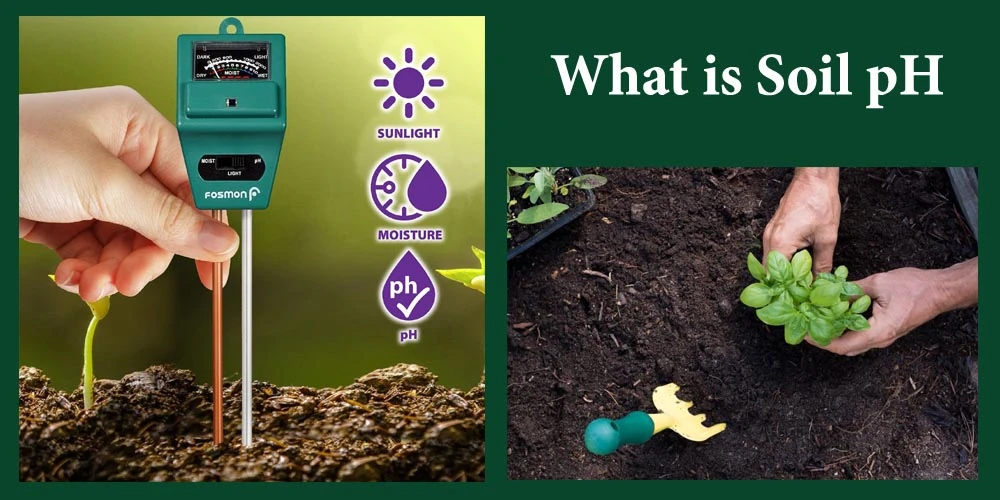
The soil pH is the measure of alkalinity or acidity of the soil. Thus pH measures the potential of hydrogen ions in an environment regardless of whether the ions are negatively charged or positively charged. If there are more concentrations of positively charged hydrogen ions in the soil, then it’s acidic. However, if there are more concentrations of negatively charged hydrogen ions or hydroxyl ions, it means the soil has high alkalinity or basic.
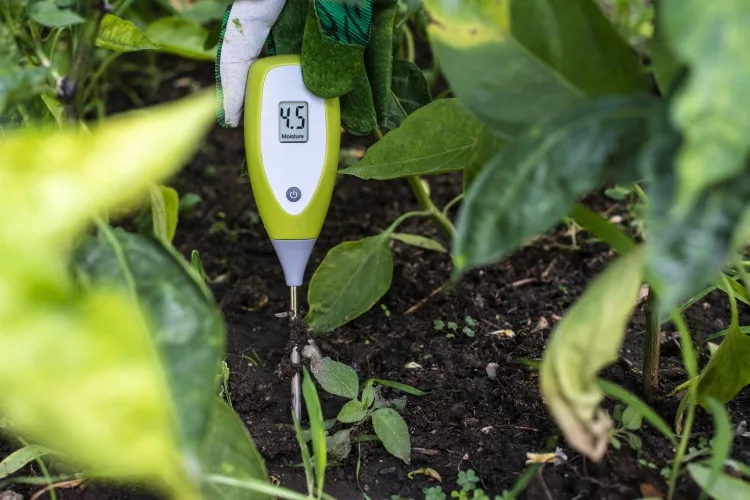
The acidity or alkalinity is measured using an algorithm scale that runs from 0-14. If, after testing, you find the pH reading to be between 0-2, it means the soil is strongly acidic. If measures between 3 and 5, the environment is weakly acidic. A soil measuring 6-8 is considered neutral. 9-11 means weakly primary, while 12 – 14 means strongly basic. In simple terms, as the scale goes from factor 7 up towards 14, the soil increases in alkalinity. On the other hand, as the pH level decreased from 7 towards zero, acidic increased.
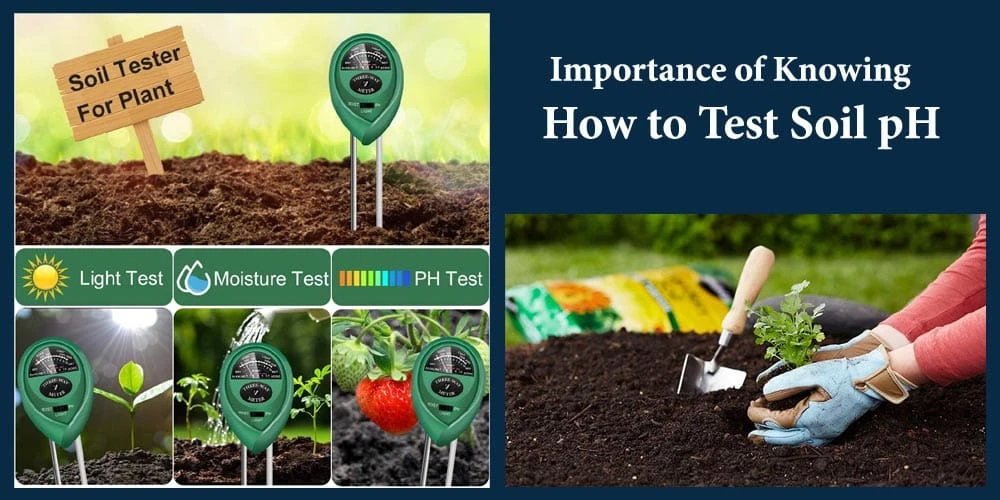
As a gardener, understanding the pH level of your soil helps to know whether necessary nutrients will be available for the plants or not. Moreover, the data can also determine the amendments required to boost your soil structure.
Another advantage of testing soil pH determines the health status of your garden. Testing with a pH meter shows not only the pH level but also soil texture as well.
Testing soil pH helps to know what to expect and possible solutions; for instance, if the pH is too alkaline and dry, there could be fungi. Utmost, most plants thrive at a balanced pH of 5.5-7, so it’s essential to try reaching a neutral pH.
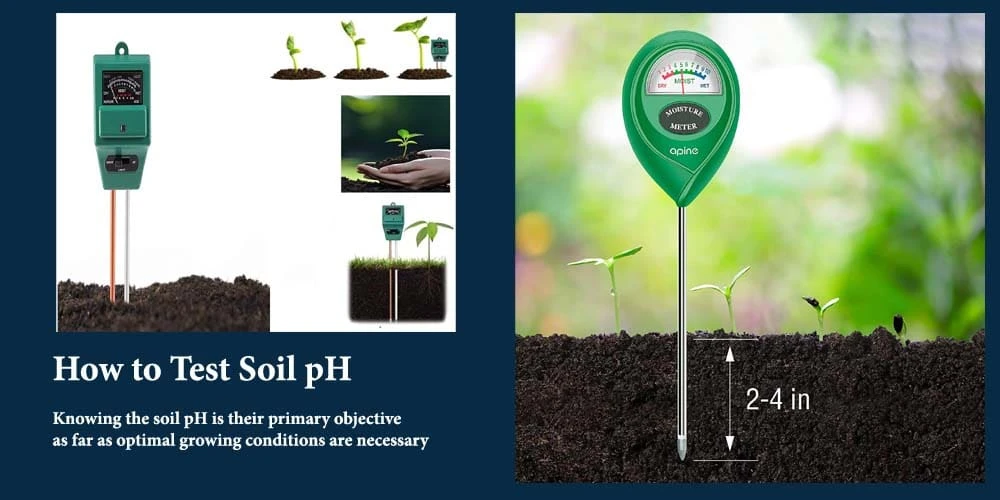
With age, rocks under the earth’s surface become weak and start weathering, and soil is formed. The soil formed varies in the level of acidity or alkalinity. Soil is formed by the results of the weathering of rocks materials deep under the earth’s surface. Acid soils result from shale or sandstones, while alkaline soils from limestone.
Rainwater is slightly acidic; therefore, soils are acidic in places with high rainfall. The reason being, rainwater reacts with carbon dioxide in the atmosphere to form carbonic acid. Thus, it causes leaching of bicarbonates and cations when it rains, increasing positively charged hydrogen ions. However, in arid areas, the soil is alkaline because of less rainfall and no bicarbonate leaching.
Constant application of nitrogen-based fertilizers in the farm can increase soil acidity. For instance, ammonium fertilizers undergo a nitrification process resulting in nitrates that the plants utilize. The nitrification process releases positively charged hydrogen ions as a by-product which intern increases soil acidity.
The rain in the forest, desert, or anywhere else is usually acidic. And to make the matter worse, in urban areas where there are factories or releases from fossil fuels’ burning, the energies add nitric and sulphuric acids. Thus the rain becomes too acidic, further increases the soil acidity.
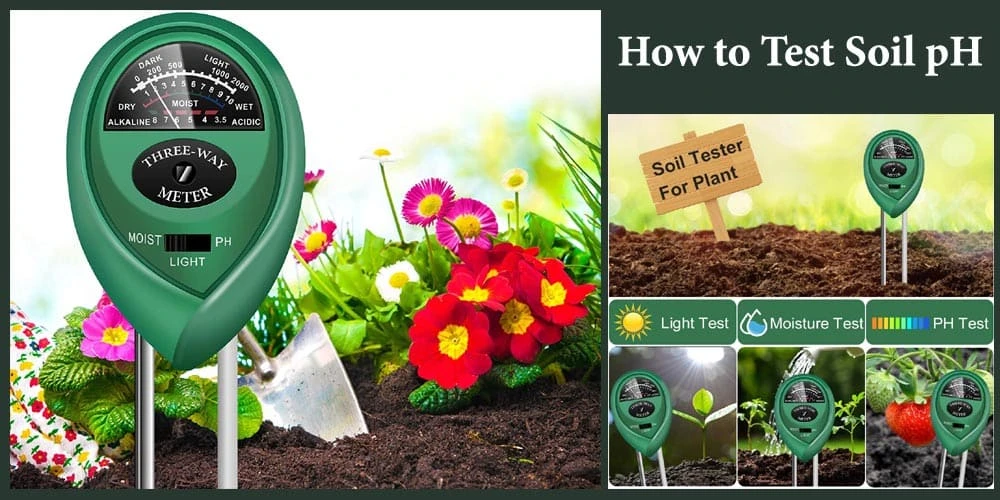
Before carrying out any soil testing methods, there are few simple apparatus you need. That is a garden trowel, a clean bucket, and cleans paper.
Step 1. Collect small amounts of soils from over ten different parts of the garden, digging up to 10 inches deep into the garden. Collect only from typical areas, excluding sandy, saturated, and so on until it almost fills the bucket.
Step 2. Stir to mix the soil, removing larger particles and debris like twigs, rocks, etc.
Step 3. Depending on the testing method, spread the soil mix on a newspaper to form a thin layer and allow overnight to dry.
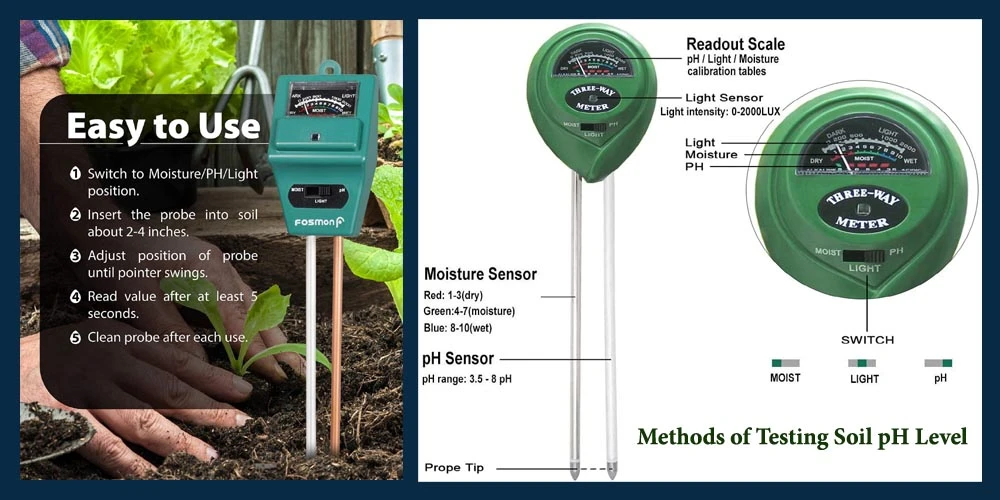
There are various methods you can use to test soil pH. Choose the most convenient way depending on your budget or the accuracy level you expect.
If you need the most straightforward and accurate, have your soil sample sent to the lab. Professionals do commercial soil testing in the lab and deliver reports accompanied by suggestions. Using the recommendations, you can therefore balance the soil pH extremes, if acidity or alkalinity.
In this method, the measurements use litmus paper, and the accuracy level is based on your reading ability. It gives more accurate results compared to DIY plans. Before testing, you will need the following apparatus: test kit (litmus paper), glass bowl, distilled water, and a spoon.
Put about a cupful of garden soil in a bowl and add some distilled water to a shakable amount. Holding the test kit by the non-reading end, dip into the mud mix, and wait for about a minute. Remove the kit immediately, dip it into the clean distilled water, and then compare the reading along with the value chat.
With all the soil pH testing methods, using pH meters gives the most accurate and reliable results. As a gardener, it is beneficial, simple to use, and only a one-time cost. It may be costly but last very long, thus economical in the long run. Directives are as follows.
Step 1. Using a glass container, place an equal amount of dry soil and distilled water, then stir.
Step 2. After thorough stirring, let settle for like 30 seconds or so.
Step 3. Finally, stir again and then obtain the reading to follow the ng manufacturer’s directives.There are so many ph meters in the market. You can choose the most accurate and quality option worthy of your budget. It is easy to get an option that works well independent of weather conditions and has simple, straightforward instructions. The best advice is to get the pH meter instead of other methods and solve your gardening woes.
Finally, knowing your soil Ph can help you understand the right crop to plant for quality and quantity results. Moreover, you can use the pH report to learn which can be added fertilizer or chemical to balance the soil alkalinity or acidity level. After doing the amendments deemed necessary, your plant will be able to absorb nutrients properly. Therefore, it is recommendable to use pH meters to determine soil texture and pH level.
 |
 |
 |
 |

About Truman Perkins
Truman Perkins is a Detroit-based SEO consultant who's been in the business for over a decade. He got his start helping friends and clients get their websites off the ground, and he continues to do so today. In his free time, Truman enjoys learning and writing about gardening - something he believes is a natural stress reliever. He lives with his wife, Jenny, and their twins in Detroit.
 |
 |
 |
 |
Get new FREE Gifts. Or latest free growing e-books from our latest works.
Disable Ad block to reveal all the links. Once done, hit a button below
 |
 |
 |
 |